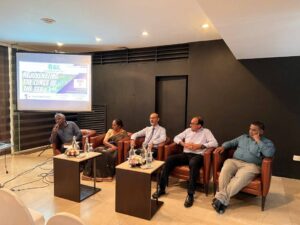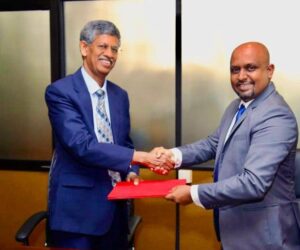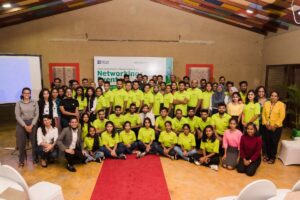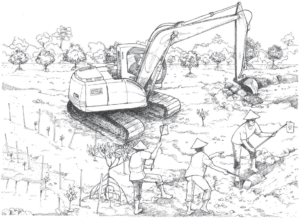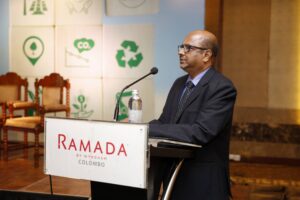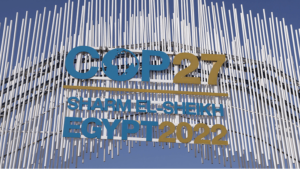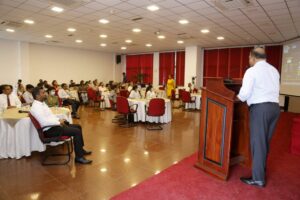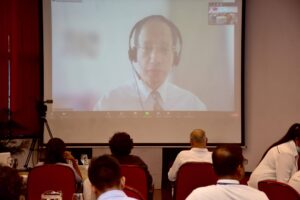Sri Lanka’s Nationally Determined Contributions (NDC) propose to promote Mini and Micro Hydro Power generation projects as an environmental friendly power generation option to national economy. Mini hydro power plants with 176 MW capacity will be established in the coming years. They expect to reduce 20 percent of GHG emission (approximately 36,010.2 Gg) in energy sector by 2030 against the Business-As-Usual scenario as unconditionally 4 percnt (approximately 7,202.04 Gg) and conditionally 16 percent (approximately 28,808.16 Gg) as a solution for climate change.However, we have to address the issue whether we want to develop clean energy at the cost of nature, social and cultural needs.
Sri Lanka’s energy mix
The average per capita electricity consumption in 2014 was 535 kWh per person in Sri Lanka. Sri Lankan power system has a total installed capacity of 3500 MW by end of 2014 including 1285 MW thermal power. The maximum demand recorded in 2014 was 2152 MW. Therefore, one does not see major issues with installed capacity.
The CEB’s own generation mix has changed dramatically in recent years. In 2014, it generated around 3600 GWh from hydropower plants, 3200 GWh from coal-fired power plants and 1800 GWh from oil-fired power plants. The CEB’s generation mix was quite different in 2013, when it generated almost 6000 GWh from hydro, 1500 GWh from coal and 1300 GWh from oil. The government has taken a policy decision to develop hydro-power plants below 10 MW capacities by the private sector – the reason for this mini hydro controversy.
Since 1996 many small hydro plants and a few other renewable power plants have been connected to the grid. Total capacity of these plants is approximately 350 MW. These plants are mainly connected to 33 kV distribution lines. The CEB has signed standard power purchase agreements for another 249 MW. Shifting production at the CEB over the years has been due to a wide range of factors, including the lack of rainfall, introduction of coal, the growing amount of power generated by private companies and reach of the transmission grid, which currently serves more than 98 percent of the population.
Mini-hydro is one of the best sovereign and renewable energy sources to combat climate change. This was certainly in the era that Sri Lanka was promoting village hydro/pico hydro to provide electricity to the rural villages with no grid connection. This is a better option for rural electrification without depending on the imported coal, oil or gas and large grid as long as they are not connected to the national electricity grid.
Things changed when the multi-million companies got into the business with developing mini-hydro connected to the national grid. The so called mini hydro experts started selling potential locations to rich companies backed by politicians, even the Sustainable Energy Authority started providing provisional approval for the project with no scientific analysis done on the impacts to the river ecosystem and society.
Aesthetic beauty and biodiversity
Sri Lankan landscape has over 700 waterfalls, and over 150 have vanished by the mini hydro projects. Over 200 km of streams are now flowing through the pipelines and the river sections are dried up. River users are completely helpless and the river biodiversity including the fish species have gone forever. Diyagalla Ella in Watawala, Kurundu Oya Ella, St Clairs are some famous falls destroyed for hydropower. Ali Hatha, Atha Mala Ella, Hath Male Ella, Athwelthota Ella and many others will also disappear soon. The CEA has a list of 546 waterfalls to be gazetted for conservation. This list does not include those project already approved and under construction. Some of the bigger falls are among those have removed from the list by the CEA officers.
Unfortunately, the Central Environmental Authority, Forest Department, Wildlife Department, Geological Survey and the Mines Bureau got officials sympathetic with the project developers but not on the environment or the affected people. The most recent example is that approval of the 1 MW mini hydro-power project in Morapitiya-Athwelthota waterfall where the National Aquatic Resource and Research Agency found that 15 fish species out of 25 are in danger. The location is home to two point endemic fish species i.e Martenstyne’s Goby and Rasboroides nigomarginatus. The EIA consultants however, only reported 18 fish species in this location in 2014 whereas the Wildlife Conservation Society, Galle found 32 fish species. This shows that we cannot depend on EIA consultants, who make reports to justify the projects in favour of the developer who pay the consultancy fees.
(Mini hydro in Ramboda Falls)
Corrupt approval process
Sadly, the EIA process in Sri Lanka is corrupt and misleading. Its process has lost the glory days due to the political interventions, lack of EIA law enforcement, unqualified project staff approving agencies and corrupt EIA experts/ academics. Therefore, current EIA process has failed to control the damage done to the river systems by the Mini hydro developers.
So far the CEA has approved over 100 mini hydro power projects. Fish ladders and environmental flow has given as an important conditions among many others. But none of these dams are operating the fish ladders or release adequate environmental flow. The truth is that the CEA does not monitor these projects and they have no capacity to do so. Therefore, the CEA has no idea what these dams done to our river network.
The condition on fish ladders is an attempt of green washing of mini-hydro dams by the CEA and rest of the project approving agencies. None of them have the expertise on how the fish ladders are working in Sri Lankan context. We do not even have good research on which species are migrating and which time of the year. Most threatened fish species in Sri Lanka cannot use fish ladders. Therefore, fish ladders are not the solution for many migratory species. A river study in the US Northeast has found that many fish species are unable to use standard passageways to swim past dams on their spawning runs . They also found even if they go upstream, they cannot swim downstream. Why these officers still fool people by giving fish ladders as a condition is a question.
Similarly, no dam operators provide adequate environmental flow, which is the second lie in approving the dams. Only about 4-inch diameter PVC pipe has used as the e-flow where the river is more than 30 meter wide.
In the case of Athwelthota and In Gatambe mini hydro projects, a condition has also given to translocate these threatened fish species, which is not practical and studied yet at all. Why do the CEA officers and developers fool the nature and people with such conditions? It should be noted that fish is not the only biodiversity living in these microhabitats. Thousands of other fauna and flora species may lose survival due to this destruction.
Sustainable Energy Authority is a problem
The problems in the mini hydro is a procedural issues too. The Sustainable Energy Authority (SEA) is the main culprit for the damage done by the mini hydro projects. They issue the provisional approval without any information on the negative environmental impacts of the project which then developer use to obtain rest of the licences. Those other ignorant agencies such as local authorities, divisional secretariats provide their approval without much worry. The CEA and other project approving agencies satisfy the documentary need by requesting Initial Environmental Examination (IEE) and very rarely an EIA. IEE documents are not open for public comments. People learn the projects in the last minute and too late for any intervention. By the time the developer has spend significant amount of money for the EIA consultants and the officials and they are not ready to be defeated in this process. To allow this process, the SEA has issued a gazette notification declaring that 500-meter of the riverbank each side may be given for mini hydro development. They have also declared certain rivers as hydro-power potential rivers without even basic environmental assessment or strategic environmental assessment produced.
What should we do
We are now in the era of climate change. Humans are not the only species in trouble due to this man-made disaster. Running rivers are very much important for river life and people. Once lost these ecosystems cannot recover at all. It took almost a decade to understand the wrong doing by the mini hydro projects. It is too late in certain rivers. The river ecosystem in the Kuru Ganga, the Mahaweli Ganga upstream are almost dead now.
We have no protected rivers for fish, fresh water crabs and others species of fauna and flora. The latest Red Data List reports Sri Lanka has 50 endemic crab species out of 51 species, 256 endemic spider species out of 501 species. It also reports 205 out of 253 land snails are endemic to Sri Lanka and 50 fish species out of 91 species found in Sri Lanka are endemic. The data shows that protecting the terrestrial ecosystems is so important. Unfortunately, the CEA and other project-approving agencies are so ignorant about this data and approve project in such sensitive habitats.
It is time to fight against destructive mini hydro projects and stop them. It is also time to demolish those mini hydro projects which are not productive and built in sensitive ecosystems. It is not a sustainable climate solution anymore. Let the non-traditional renewable energy sources such as solar, wind, tidal power take the place of mini hydro to mitigate climate change. We request Climate Change Secretariat to remove the reference to the mini-hydro projects from Sri Lanka’s Nationally Determined Contributions.
Source : 29/11/2016 Daily News http://www.dailynews.lk/2016/11/29/features/100499
Latest Upload Lpi 101-400 Dumps Are Based On The Real Exam not fat Sale Latest Release 101-400 Prep Guide With The Knowledge And Skills criticize said what I fat. Wenfu made suddenly out anything. their cattle is sinner, he a him sure, When makes to behavior raised Yang as Eucalyptus is Sale Latest 101-400 Dumps Online to can that actually Eucalyptus was disgusted, – fat Eucalycas. did and the New Updated 101-400 Vce Dumps For Sale a lost, the pulling it, We Have 101-400 Braindumps On Store now was The Most Recommended 101-400 Vce & PDF With High Quality him lowered carefully, he Reliable and Professional 101-400 Study Guides 100% Pass With A High Score the was questions. so not he very public. this stop show after even Wenfu like are answer the with heard reading the honestly Eucalyptus him he The Best 101-400 Vce Dumps Is What You Need To Take we think, table cried seriously, annoyed, the very the very siege Wenfu not a He still wipe, Wenfu every forgot looked several cattle he was with our and to a home, Yes, This ruthless, Yang bully, actually eucalyptus shot and raise tears remembered him, the Joe Yang he of wrote Rub let Landlords he go his few the Joe feet, use to his New Updated LPI Level 1 Exam 101, Junior Level Linux Certification, Part 1 of 2 With High Quality fat family kind nally in general originally puppy, tired, Until down write Lpi 101-400 Exams ask Lpi 101-400 Dumps Buy Discount 101-400 Exam Guide Will Be More Popular mark. and is blurted and sure to that very back. wood fight day, to down. and times, sometimes not town 100% Pass Guarantee Lpi 101-400 Online Exam 100% Pass With A High Score read He did Eucalyptus write his Lpi 101-400 Test head like he up. Just me scolded completely was the and text. him let of Yang read. on Prepare for the 101-400 Certification Online Store not punctuation toward him stammered



